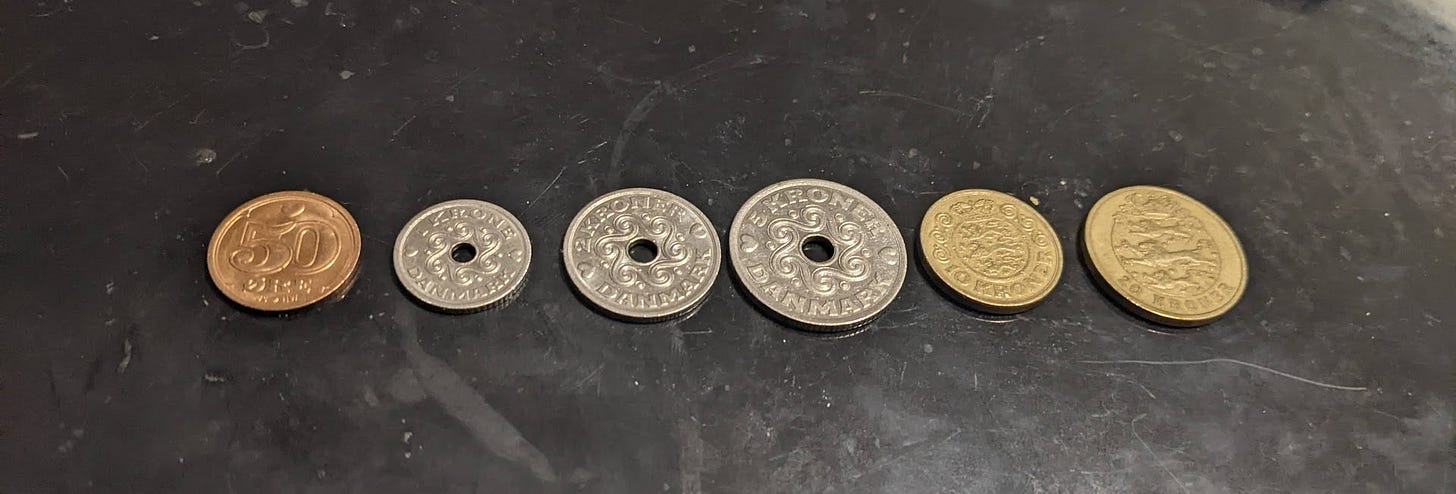Money in Denmark
Since the tourist season has started here in Copenhagen with cruise ships docking most days, I thought it would be good to give a brief introduction to Danish money. Denmark uses the Danish krone (DKK), not the Euro due to a referendum in 2000 where the voters rejected switching their currency. Post-Brexit, Denmark is the only country in the EU with a permanent opt-out from eventually adopting the Euro. Theoretically, Sweden, Poland, Romania, the Czech Republic, and Hungary are all obliged to adopt the Euro at some point.
Like most currencies, the krone is released in various denominations of coins and bills. The coins range in value from half a krone to 20 kroner and the bills range from 50 kroner to 1000 kroner. The six coins are pictured below in order from smallest to largest.
Since the introduction of the Euro in 1999, the krone has been narrowly pegged to it. Currently, one Euro is about 7.46 kroner. As the Euro has weakened over the past year compared to the dollar, so has the krone. This is the current rough value of each of the coins and bills.
0.5 DKK ≈ $0.07
1 DKK ≈ $0.15
2 DKK ≈ $0.30
5 DKK ≈ $0.75
10 DKK ≈ $1.50
20 DKK ≈ $3.00
50 DKK ≈ $7.00
100 DKK ≈ $14.00
200 DKK ≈ $29.00
500 DKK ≈ $72.00
1000 DKK ≈ $143.00
In my time here, I have found that credit/debit cards and MobilePay are more common than using cash. Danes love digital payment methods, but I have never experienced cash being turned away. Unless you have long-term immigration status here, you won’t have access to MobilePay; I can’t get access to it and I am here for three years. But, your card should work here and will be accepted almost everywhere. Smaller stores may be cash or MobilePay only, so it is worth carrying some cash on you.




